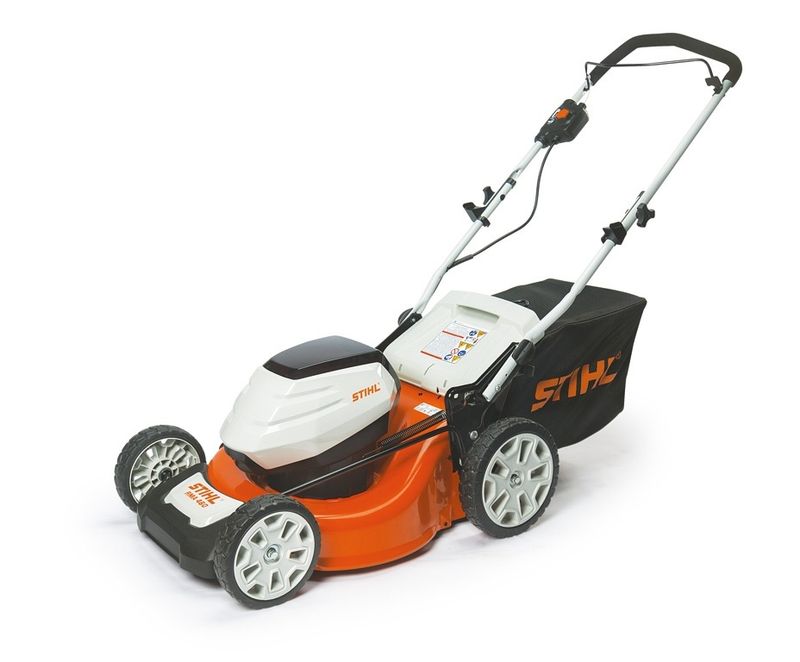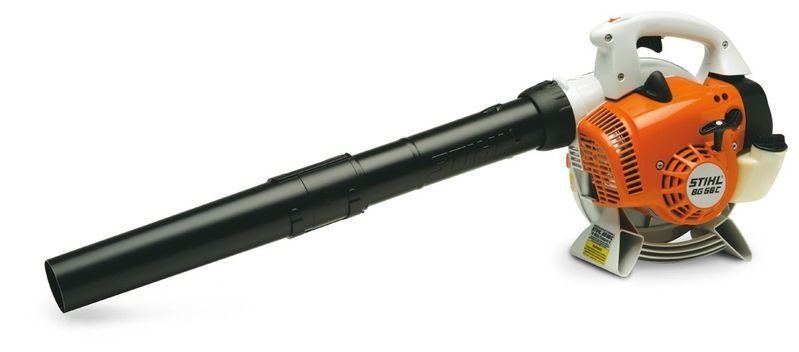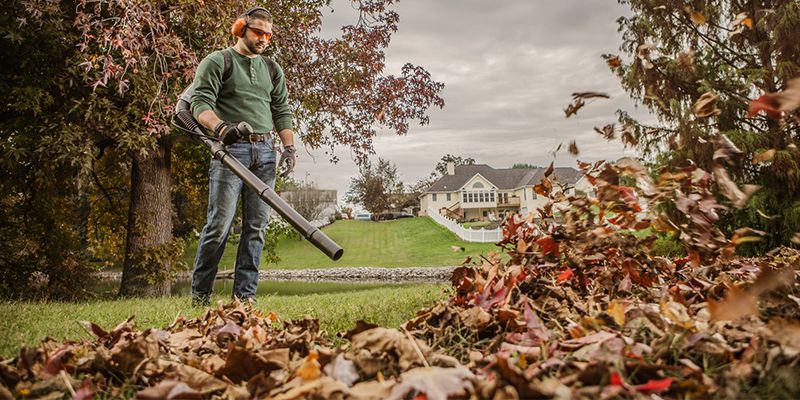
How to deal with leaves this fall
Are you dreading cleaning up leaves this fall? Or maybe you're trying to decide if you should even deal with leaves this year. We're here to answer all your questions, from whether or not you need to clean up leaves to how to do it and what equipment to use.
Should you remove leaves from your yard?
That pile of leaves spread across your lawn can be intimidating, especially if you're planning to tackle it wielding nothing more than a rake. The good news is, there are some cases where removing leaves is unnecessary. Other times, piles of leaves can smother your lawn and cause some serious damage.
As a rule of thumb, leaves covering more than a third of the yard should be removed or thinned out. If the leaves cover less than a third of the lawn and you can see grass blades coming through, it might be okay to keep them there.
Keeping leaves on the lawn can actually be healthy for it. Leaves will decompose over time and provide nutrients back into the yard.
What if your lawn is covered entirely with leaves? Is it still healthy to leave them be?
If you want the free fertilizer from leaves without worrying about suffocating your lawn, you can mulch them or thin them out.
Best way to remove leaves from your yard
Some old-fashioned raking and bagging will do the trick, but it may not be the best method. The best way really depends on how you see it. You can save money and put in more time and effort, or spend money to make the job quick and easy.
Besides raking by hand, the cheapest method is the one you already have the equipment for. If you own a blower, piling up leaves for bagging will be much easier. Own a lawn mower? Most walk-behind mowers come with a bagger attachment, so it will do the bagging for you. Riding mowers can also use bagging attachments or tow-behind sweepers, so if you own one of those, you're in good shape.
If you don't mind spending a little money, your leaf removal experience can be painless. With a bagger, mulching kit, or tow-behind collection system for your riding mower, the job can be done with very little effort in about the same time it takes to mow. STIHL offers shredder vacuums that will pick up leaves, shred them, and bag them all in one go.
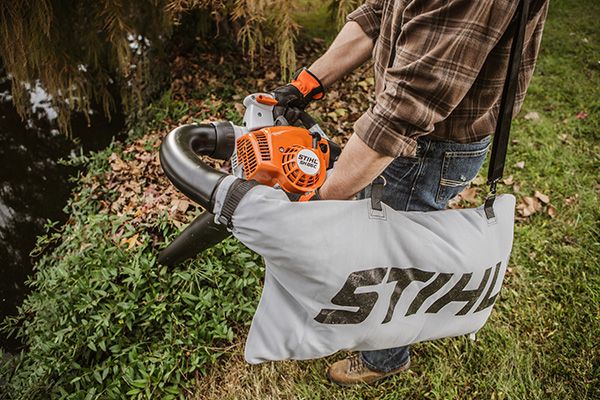
Is mulching leaves good for the lawn?
Absolutely. If the leaf layer is covering your lawn, set your riding mower or walk-behind mower to mulch mode and go over them. Like grass, breaking up leaves into smaller pieces will make it easier for them to decompose. Be sure to follow the best practices when mulching and only mow when the leaves are dry, otherwise they'll stick to the mower deck and clump together in the lawn.
When should you bag leaves instead of mulching?
Mulching is great, but it's not a one-size-fits-all solution. There are several reasons why you may choose to bag leaves instead:
- If the leaf layer is too thick, mulching may help some, but there may still be too much for your lawn to handle.
- If you recently overseeded your lawn, mowing will disturb the grass seeds.
- Members of a Homeowners Association may be required to bag leaves.
- You want to use them in a compost pile or bin.
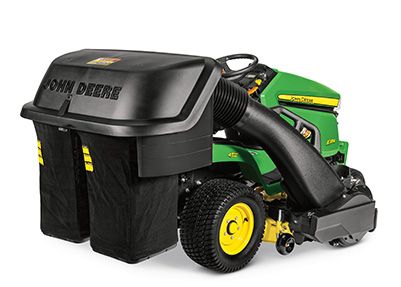
How to use a leaf blower for removing leaves
While leaf blowers are mostly used for clearing debris from garages, driveways, walkways, and patios, they can also help with lawn cleanup. If you're physically unable to use a rake, blowers can do the heavy lifting for you.
When using a leaf blower to remove leaves, start in the corners of the yard and work your way towards the middle. Lay a tarp down to catch the leaves so you can easily drag them around. It's counter-productive to worry about every single leaf, so just focus on getting the bulk of them moved.
With the tarp full, you have a few options for handling the leaves. You can fold it up and haul the leaves off, move them to a burn pile or compost bin, or roll up the tarp and funnel them into bags.
Once the majority of your leaves are taken care of, decide if the remaining leaves are worth dealing with. Use a rake if you want to pick them up or, if your blower has it, switch to vacuum mode and bag up the remaining leaves. It's better to use the vacuum for smaller loads as most leaf blower vacuum bags won't hold many leaves.

Best equipment for removing leaves from your lawn
If you want to remove leaves in the quickest and most efficient way, you'll need some equipment designed for the job. Leave the rake in the shed and bring out the big guns.
How to pick up leaves with a riding lawn mower
Using a riding mower is the most effortless way to remove leaves from your yard. You have a few options: baggers, tow-behind lawn sweepers, and mulching kits.
To use a bagging leaf vacuum, you'll need a compatible riding mower or zero-turn. All John Deere lawn tractors and residential zero-turns can attach bagging systems. With the bagger mounted, drive over the leaves to collect them. When the hoppers are full, remove them and dump the leaves out. The hoppers can also be lined with plastic bags for easier disposal.
Tow-behind lawn sweepers will work on any lawn mower with a hitch. Tow-behinds are cheaper than bagging vacuums, but require a little more labor. Drive around the lawn with the sweeper to collect them, then dump the leaves into a pile. For easier cleanup, lay out a tarp to dump them on.
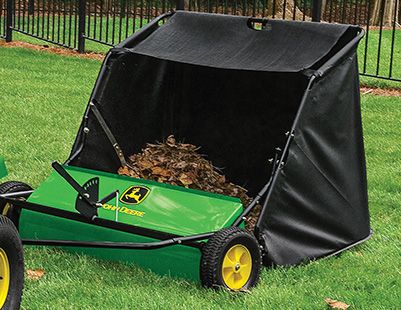
If you decide to mulch, or don't want to spend extra money on a sweep or vacuum, most mowers have mulching kits available. To mulch the leaves, close the baffle on the deck and go over the lawn. The chopped up leaves will work their way down between the grass blades and decompose more easily.
Using walk-behind mowers to clean up leaves
Most walk-behinds are capable of mulching and bagging. To bag leaves, make sure the rear-discharge plug is removed and attach the bag. Close the side discharge chute and you're good to go. To mulch, remove the bag and plug the port, leaving the side discharge chute closed.
There are a couple of drawbacks that go along with using walk-behind mowers for leaves. Processing large amounts of material can be hard for them to handle. You may also find yourself emptying the bag fairly often. Given the option, I'd still choose a walk-behind over a rake any day.
STIHL offers battery-powered lawn mowers with mulching and bagging capabilities.
Walk-behind leaf vacuums and blowers
If you have a serious leaf problem, you might consider a walk-behind yard vacuum or blower. These machines were build specifically for dealing with debris-covered lawns.
Walk-behind lawn vacuums feature much larger bags than mowers so you can pick up more leaves before stopping. Billy Goat leaf vacuums are designed to pick up other litter as well, so you don't have to worry about tearing up your lawn mower.

Walk-behind blowers are more powerful than most handheld and backpack blowers. They're also closer to the ground to force the leaves out of the way. These machines work great for moving the leaves around, but if you plan to bag them you'll still have to use a tarp or go back and collect them somehow.
Leaf blowers and shredder vacuums
Earlier I went over the best way to remove leaves with a leaf blower, but didn't talk much about the equipment. For the a blower with a vacuum built-in, check out STIHL's shredder vacs. If you want to save money, you can pick up a handheld blower or backpack blower without the shredder option. STIHL has a full line-up of blower and shredders to choose from with battery or gas-powered options.
While you're clearing leaves from the yard, don't forget to remove leaves from your gutters. STIHL offers leaf blower gutter cleaning kits for several of their handheld models. These kits include tubes that attach to the end of the blower and extend their reach by more than 10 feet.

Hutson carries the right equipment for all your fall cleanup needs. If you have any questions or would like to try out any of the equipment we mentioned, reach out to your nearest Hutson location.

